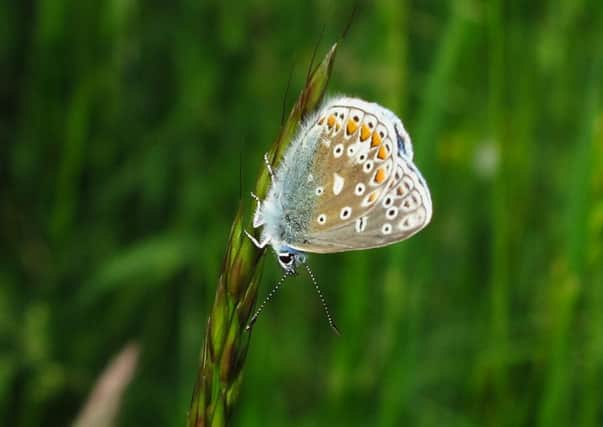How to provide salvation through the winter to small garden visitors


If we all made a few small changes to our outdoor space, the overall impact on our native wildlife would be huge, according to Harriet Johnson, people and wildlife officer at Yorkshire Wildlife Trust.
Seven years ago, the charity took over the lease of a wildlife garden in Pearson Park in Hull city centre and it’s now a great example of what can be achieved in a relatively small space.
Advertisement
Hide AdAdvertisement
Hide Ad“The whole garden has been designed with wildlife in mind, but there are small areas within it that have been created to provide people with inspiration for their own gardens,” explains Harriet.
“One of the best ideas is to add plants that offer multiple benefits. For example, herbs such as oregano, marjoram, rosemary and thyme are great to cook and eat but are also very insect-friendly. You can even grow them in pots if you’ve only got a small yard.”
It’s all about working with the space you’ve got, she says.
“If you have plenty of room, you could use an old pallet to create a ‘mini beast hotel’, stuffing it with lots of different materials, such as old bricks, straw, hay and logs. I have a small garden, but I’ve found room for a pile of logs, old tiles and bricks, which is great for centipedes, millipedes, woodlice, spiders, worms, beetles and other mini beasts.”
Hedgehogs will appreciate a box to hibernate in, particularly in urban areas where there are fewer suitable spots. In fact, gardening for hedgehogs is the theme for this year’s Wild Garden Week, which gets underway in late October. The website - www.wildaboutgardensweek.org.uk - features tips on gardening with hedgehogs in mind, including the need to create ‘highways’ to allow them to roam safely from garden to garden in their nightly quest for food. This means leaving five-inch holes in garden fences to allow them to pass through easily.
Advertisement
Hide AdAdvertisement
Hide AdHarriet believes more people than ever are creating ponds in their gardens to the benefit of amphibians and insects.
“You don’t have to turn your whole garden into a nature reserve. Ponds are another idea that can be adapted according to the space you have. A buried bucket will do, although I do know someone who has created a natural swimming pool in his garden; he can actually get in and swim with the newts.”
Many of the changes you can make require little effort. For example, bird boxes and bug hotels can be bought cheaply from garden centres, although it’s also possible to make your own.
Harriet says: “You can get bug hotels specifically for ladybirds or butterflies, as well as for bees. These, along with bird boxes, need to be positioned at least one metre above ground level in a sunny spot. Even if you’ve got a tiny garden, you can still do something and, when you start to get wildlife visiting, it’s really nice to be able to sit back and enjoy it. There’s nothing like having your morning coffee outside and watching birds on your feeders, it’s really relaxing.”
Advertisement
Hide AdAdvertisement
Hide AdHarriet’s top tips for attracting wildlife to the garden include:
Pick plants with multiple benefits;
Leave areas of grass that you don’t cut so often and sow wildflower seeds to develop into a pollen-rich meadow;
Leave out food for birds;
Pile logs or a mixture of old tiles, twigs, rocks and logs in a corner as a place for wildlife to hibernate;
Install a pond, bird boxes and bug or insect hotels;
Have as much in flower in your garden for as long as possible to provide food for bees and other insects. Look online or ask at a garden centre for advice about what flowers late or early in the season;
Advertisement
Hide AdAdvertisement
Hide AdLeave a lump of deadwood to rot and provide habitat for insects, or leave a deadwood tree or branch standing as a place for birds to nest;
Create a fernery using logs and tree stumps;
And, allow plants to go to seed, particularly if you’ve created a meadow area.